Introduction to Miniature Circuit Breaker Accessories
A standalone Miniature Circuit Breaker is just a current dependent switch which when tripped will turn itself OFF, interrupting power in case of an overload or short circuit. When used in a control panel or in process equipment, a Miniature Circuit Breaker can offer much more than just current protection, it is capable of remote tripping, status indication, undervoltage/overvoltage protection, and more.
For all these functions, there are specific accessories which turn a single-purpose Miniature Circuit Breaker into a multi-purpose assembly. Commonly used accessories are:
- Auxiliary Contact
- Alarm Auxiliary
- Shunt Trip Module
- Undervoltage / Overvoltage Module
- Busbar
- Lock-Off Attachment
All of these accessories attach easily to the Miniature Circuit Breaker and provide a great level of functionality for control and automation applications. Let’s see how these accessories are useful one-by-one.
Auxiliary Contact
This accessory allows remote indication of the status of a Miniature Circuit Breaker or Supplementary Protector to which it is connected. Simply put, it helps to identify whether the breaker is open or closed, remotely. Apart from remote status indication, there can be multiple use cases of this accessory. Here is one example.
Consider the circuit below, a motor actuator circuit using a contactor.

In this circuit, whenever there is a fault (short-circuit or overload) at the power circuit, the Miniature Circuit Breaker will cut off the supply to the motor and protect it from the fault. But when you look at the control circuit, you can see that the contacts remain closed, continuing to supply voltage to the contactor coil, unnecessarily.
The diagram below demonstrates the use of an Auxiliary Contact along with a Miniature Circuit Breaker in a control circuit. Here you can see that the contactor will also be turned off during a fault, eliminating energy waste.
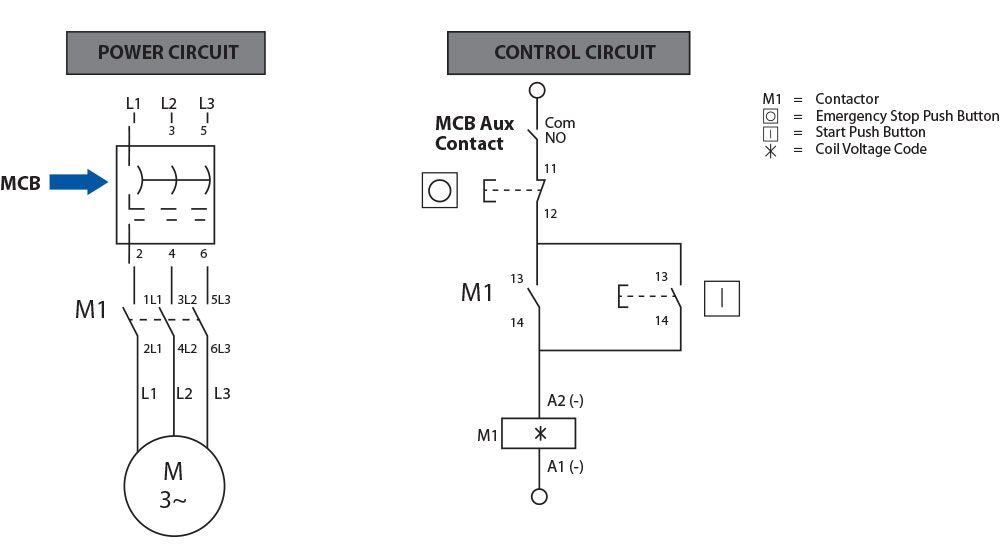
Alarm Auxiliary
The Alarm Auxiliary accessory indicates when a Miniature Circuit Breaker or Supplementary Protector is tripped. A trip can be a result of an overload, short-circuit, operation of Shunt-trip accessory, or Undervoltage / Overvoltage module.
Unlike a standard auxiliary, the Alarm Auxiliary will change its contacts state only in case of tripping.
Its contacts can be used in the actuation circuit of audible alarm or visual indication, which will signal the operator about a fault in the system. These contacts can also be used in Digital Input arrangement for use in a SCADA system, as shown below.
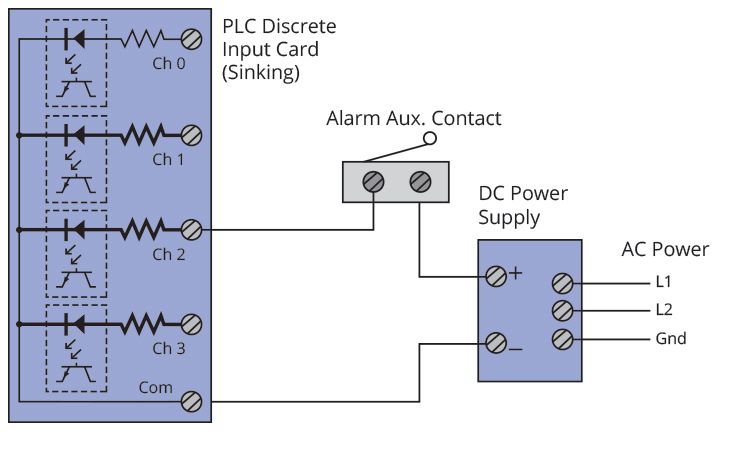
Shunt Trip Module
The Shunt Trip Module is used to remotely trip the Miniature Circuit Breaker or Supplementary Protector to which it is attached and cut off the power to any equipment or machine connected through the Miniature Circuit Breaker or Supplementary Protector.
This accessory will make the Miniature Circuit Breaker or Supplementary Protector trip when it receives the designated control voltage across its coil terminals.
An ideal application would be an “Emergency Stop” circuit. Whenever it is required to turn off the equipment supply, pushing the emergency switch will power up the shunt coil causing the breaker to trip.
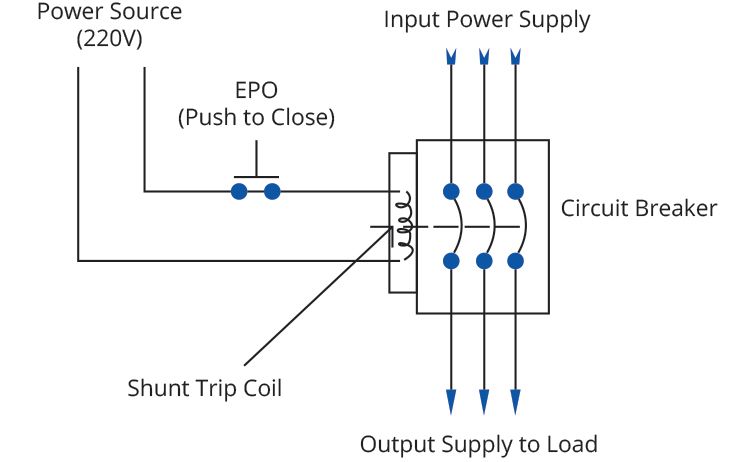
Undervoltage / Overvoltage Module
As previously mentioned, a standalone Miniature Circuit Breaker provides protection only against overcurrent and short circuit. When an Undervoltage / Overvoltage module is used it will trip the Miniature Circuit Breaker or
Supplementary Protector in the event the applied voltage across its coil terminals is out of the specified band.
In short, an Undervoltage / Overvoltage module is useful for protection against voltage dips and swells. Once supply recovers to normal, only then can the breaker be turned ON. This accessory provides a cost-effective and easy way to implement this solution.
In the circuit below, the Undervoltage coil is continuously energized and thus keeping the Miniature Circuit Breaker ON. When it is to be turned off , opening the contacts of the E-stop will interrupt the coil supply (as it is out of the specified band).
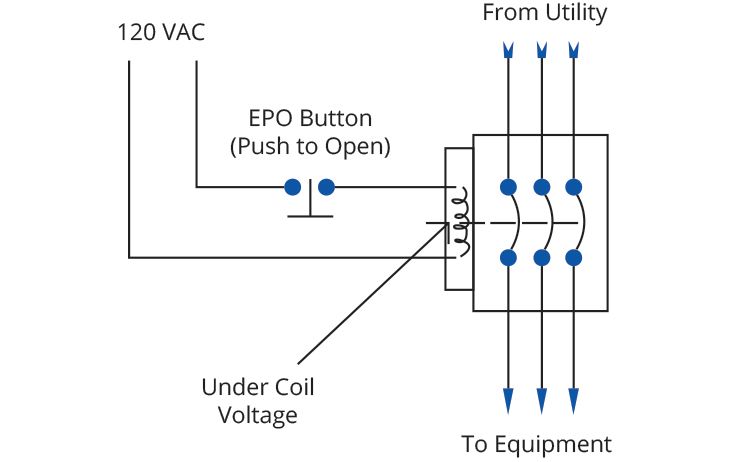
Busbar
To reduce labor intensive wiring work, panel builders often use a busbar system for efficient and error-free power feeding to Miniature Circuit Breaker terminals. Busbar systems can be termed as a next level of jumper considering its current carrying capacity and construction which varies based on the number of poles. The images below show a busbar for a 1 pole and 2 pole Miniature Circuit Breaker. Similarly, there are busbar systems for 3 pole Miniature Circuit Breakers with 3 phase input which distributes each phase to every pole of the Miniature Circuit Breaker. Busbar for 1 Pole Miniature Circuit Breaker Busbar for 2 Pole Miniature Circuit Breaker
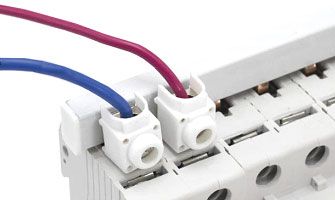
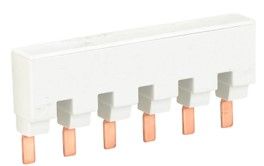
Lock-Off Attachment
In some situations, it is absolutely necessary that only an authorized person should switch the Miniature Circuit Breaker to the ON state after a trip. For example, during panel maintenance when the supply is cut off , a lock-off attachment is placed on the circuit breaker along with a padlock to prevent unauthorized access and an undesired or harmful event.
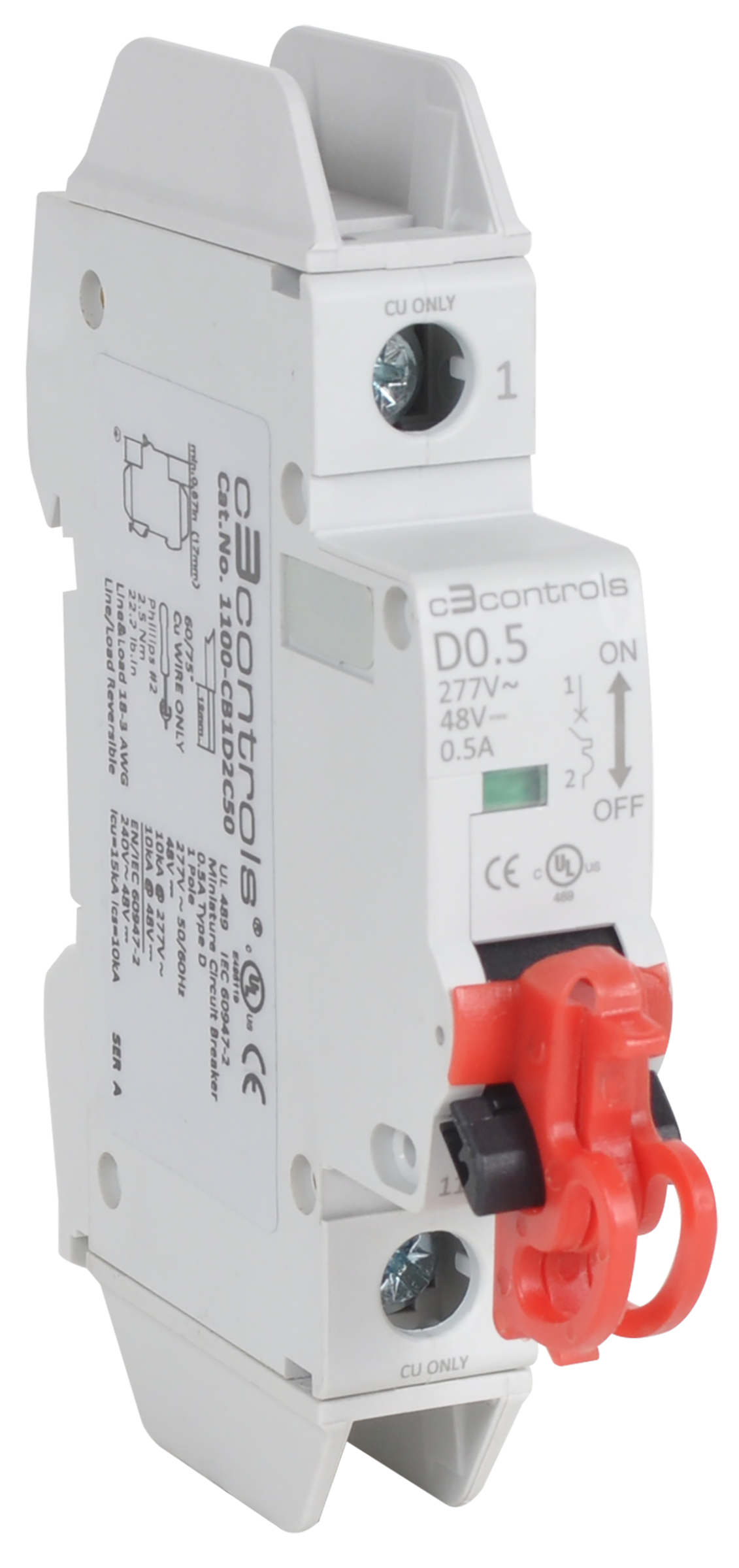
When the miniature circuit breaker functionality is expanded with the use of accessories, the value of the Miniature Circuit Breaker is increased, making application realization easy and cost effective.
c3controls now offers most of these accessories which attach seamlessly to its UL 489 Miniature Circuit Breakers and UL 1077 Supplementary Protectors. Along with IP20 finger-safe protection, these accessories are UL listed for guaranteed safety of personnel and your panel.
Frequently Asked Questions
Q1. What is the role of a bimetal sheet in an MCB? The bimetal sheet in an MCB is responsible for protecting against overloads. It consists of two different metals joined together, which expand at different rates when heated. If too much current flows through the MCB for too long, the heat bends the bimetal strip, which then triggers the breaker to trip and cut off the electricity—preventing damage to the circuit.
Q2. How often should I replace my MCB? MCBs are designed to last many years, often as long as 10 to 15 years or more under normal conditions. You should only replace an MCB if it shows signs of wear, trips frequently without cause, or fails to trip during a fault. Regular inspections by a qualified electrician can help determine when a replacement is needed.
Q3. Can environmental factors affect my MCB's performance? Yes, environmental factors like high temperature, humidity, dust, or exposure to chemicals can affect the performance of an MCB. These conditions can cause corrosion, reduced sensitivity, or even failure to operate properly. It’s important to install MCBs in clean, dry, and well-ventilated areas.
Q4. Is it safe to use multiple devices on one circuit protected by an MCB? It can be safe if the total current draw of all the devices combined does not exceed the MCB's rated capacity. Overloading the circuit may cause the MCB to trip frequently or fail over time. It’s best to distribute devices across multiple circuits if possible.
Q5. What should I look for when purchasing an MCB? When buying an MCB, consider the current rating (in amps), the type (B, C, or D curve), the number of poles (single, double, triple), and the brand’s reliability. Make sure it complies with safety standards and is appropriate for your specific electrical load and environment.
Q6. What is the difference between an MCB and a fuse? Both protect electrical circuits, but an MCB is reusable and automatically switches off when it detects a fault, while a fuse contains a wire that melts when overloaded and must be replaced. MCBs are more convenient and safer for modern electrical systems.
Q7. What types of MCBs are available? MCBs come in several types based on their tripping characteristics:
- Type B – Trips at low fault currents; ideal for homes and lighting circuits.
- Type C – Trips at moderate fault currents; used for commercial or motor-based loads.
- Type D – Trips at higher fault currents; used for industrial machinery. You can also choose MCBs based on the number of poles: single-pole, double-pole, triple-pole, etc.
Q8. How do I select the right MCB for my application? To select the right MCB, consider your load type, current rating, and the environment. For example, a Type B MCB is suitable for home appliances, while a Type C is better for devices like air conditioners or motors. Also, make sure the MCB matches your system’s voltage and complies with local electrical codes.
Q9. What is the difference between a Type B and Type C MCB? A Type B MCB trips when the current is 3 to 5 times its rated value, making it ideal for residential use. A Type C MCB trips at 5 to 10 times its rated current, so it's better for circuits with higher starting currents, like those powering motors or air conditioning units.
Q10. What is the lifespan of an MCB? MCBs typically last 10 to 15 years or more, depending on their quality and usage. Frequent tripping, exposure to harsh environments, or poor installation can shorten their lifespan. Regular maintenance helps extend their durability.
Q11. Can I replace an MCB myself? If you have electrical knowledge and know how to safely isolate the power supply, you might be able to replace an MCB. However, for safety reasons, it’s recommended to have a licensed electrician perform the replacement, especially in commercial or high-voltage settings.
Q12. How can I test an MCB to see if it is working correctly? You can test an MCB using a multimeter to check continuity or with an insulation resistance tester. A simple method is to apply a test current through a circuit simulator to verify if the MCB trips correctly. For accurate results, testing should be done by a trained electrician using proper equipment.
Disclaimer:
The content provided in this white paper is intended solely for general information purposes and is provided with the understanding that the authors and publishers are not herein engaged in rendering engineering or other professional advice or services. The practice of engineering is driven by site-specific circumstances unique to each project. Consequently, any use of this information should be done only in consultation with a qualified and licensed professional who can take into account all relevant factors and desired outcomes. The information in this white paper was posted with reasonable care and attention. However, it is possible that some information in these white papers is incomplete, incorrect, or inapplicable to particular circumstances or conditions. We do not accept liability for direct or indirect losses resulting from using, relying or acting upon information in this white paper.
ISO 9001:2015
Certified
17+ Million Product
Configurations
Lifetime
Warranty
Guaranteed
Same-Day Shipping
Advantage Pricing
Save Up To 40%
c3controls Headquarters, USA
664 State Avenue
Beaver, PA 15009
